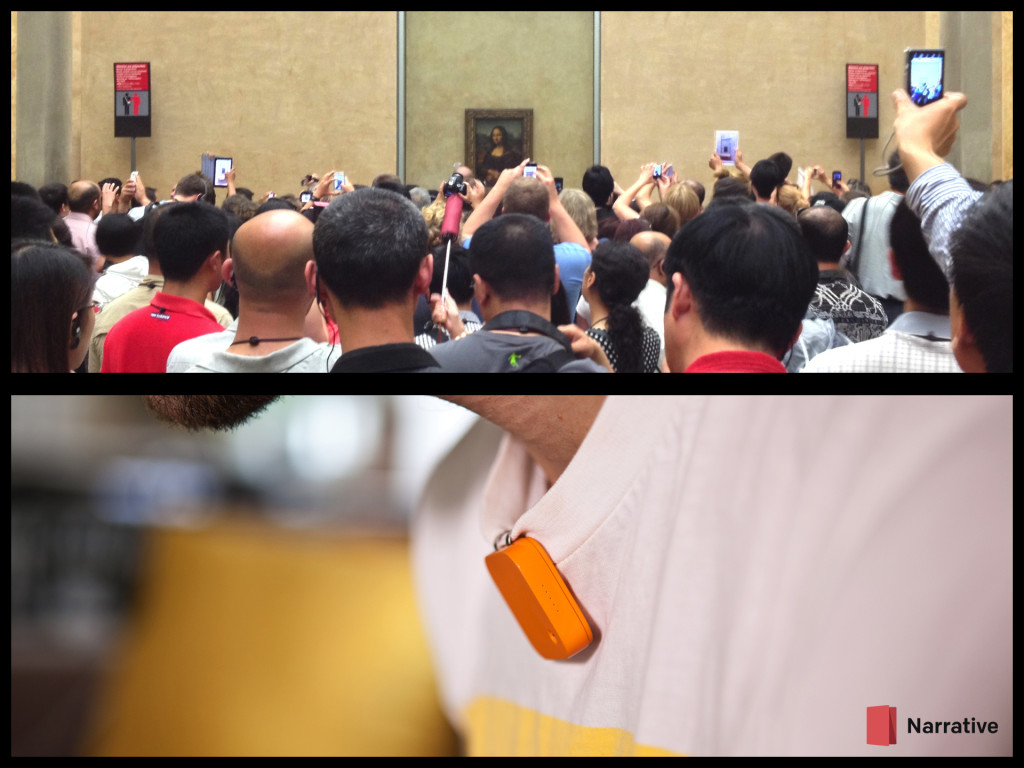Lifelogging and the future it brings
Lifelogging is defined to be the record of the everyday life produced by a portable device regularly carried around. The practice of lifelogging existed long before things like fitness trackers, mobile phones or smart apparel existed. Like the lady above, who was featured in our Lifeloggers documentary film, countless enthusiasts began lifelogging way before wearable devices were invented. They made use of what they had – notebooks, photographs and a conscious effort – to note down everything that happened every day so they could search out patterns or gaps in the way they were living and somehow make tiny improvements to their way of life. Progressively, the lifelogging bug has caught on, with many tech giants riding this wave too. This wave would eventually crash onto the shores of the future, bringing technology to the next new level, and along with it a paradoxical truth of connecting to disconnect that we might see most devices move towards in the near future.
Read more: The Most Connected Man Is You, Just a Few Years From Now and Dear digital diary – lifelogging in the internet age
From disruptive devices to the quiet worker
As much as technology today has evolved tremendously and improved our lives a great deal, one of its major flaws lie in its inability to be fully integrated with our human-human lives. Today’s devices are somewhat attention seekers, craving our sole attention when we use them. In other words, they require us to break from human-human interactions, and focus instead on the human-computer interactions. Lifelogging tools such as the Moves app, on the other hand, provide a glimpse of how technology will look like in future – hands-free devices that work with you, for you. They show us how technology can be seamlessly integrated into our everyday lives, without the need to break away from the people around us. They show us a paradoxical truth of being connected in order to disconnect from the burdens that technology today brings to us – that familiar scene where every one is buried deep into their smart phones, tablets or laptops. They show us a future where devices are working in the background for the betterment of our lives, while we go ahead and enjoy our human-human interactions.
Read more: How 30 Days Without Social Media Changed My Life and Consumer Reports: Wearable Tech Gains Popularity
From things unknown to pleasant surprises

With lifelogging tools working hard in the background to provide you with information about yourself or the things around you, one potential result is that you can begin to disconnect from the lack of knowledge. Individually, they could serve to prompt you that you are spending too much time on the computer or that you haven’t been drinking enough water. Collectively, these information could also provide fresh insights such as new ways to see earthquakes through people’s fitness trackers. This of course, has been a giant leap from the humble beginnings of lifelogging where people needed to jot down every single thing in their paper journals by hand. Today, digital lifelogging has not only been less disruptive than they were before, but they might also start to unwind into beautiful art projects before you know it (like this one which allows others to visit most of Albania in 1.5 hours or this Burning Man time-lapse to end all Burning Man time-lapses)!
Read more: Now There’s a Fitness Tracker for Your Car and The city that goes to bed early: Study finds New York is first to turn in at 11pm – but Moscow doesn’t get out of bed until after 8am
Image credited to Jawbone
From overcapacity to optimised beings

With the lifelogging devices quietly working in the background to collect useful information, we the connected beings can then begin to disconnect from our over-busy and complicated lives. Lumo Lift, for instance, aims to be your personal posture coach and activity tracker so we wouldn’t have to take out that extra time to visit the chiropractor for back problems. Although lifelogging devices today still have room for improvement in terms of its ability to analyse the data and provide targeted and useful feedback, these, I believe, would improve as more people jump onto the bandwagon of lifelogging. As this feedback begins to take shape, not only will it result in better health and concentration to complete the tasks we have to do, it will also free up time for you to do the things you love.
Read more: Lumo Lift Vibrates You Into Better Posture
Image credited to Pundit Press
From boring to mind-blowing

Or even prompt you to do things out of your comfort zone. With so many lifelogging tools out there and a dedicated platform called Matchup that feeds on our innate competitive selves, it is tough to lead a boring life. Whether it is beating your friends with that extra mile you’ve run or just taking a bicycle ride round your neighbourhood, chances are you will begin to notice things you have never seen before or catch rare sights like rainbows, butterflies, or real-life Spiderman. Yes, this week, we found Spidey – a Russian photographer who climbs to unimaginable places for a good picture. Ivan Kuznetsoy is based in Moscow and is famous by the name of ‘rooftopper’ which means he scales tall buildings and structures (often illegally) to take dizzying aerial photos of the world underneath him. Whether this was backed by a desire to be an extreme visual lifelogger or not, we do have one thing to say: well kids, do not try this at home (or out of home for that matter).
Read more: Amazing Photos Of A Daredevil Photographer. Warning: Don’t Look If You Have Batophobia and 20 Creative Hyperlapses From Instagram’s New App
Image credited to Ivan Kuznetsoy
If you enjoyed this post, you can also subscribe to our monthly newsletter!


